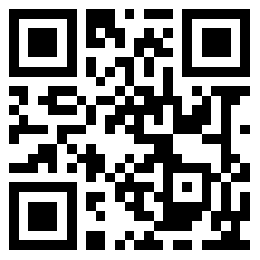American Licensing Laws
题目:
In the early-nineteenth-century United States, the medical profession was largely unregulated. There were several competing schools of medical practitioners with very different traditions and beliefs. In the 1870s and 1880s, the competing groups joined forces in calling for licensing laws that would protect all of them from untrained practitioners. The licensing movement of the late nineteenth century was by no means restricted to doctors or even to what are customarily regarded as professions. Plumbers, barbers, pharmacists, and various other groups sought and were granted licensing protection. Historically, as historian Lawrence Friedman has pointed out, there have been two kinds of occupational licensing. Some statutes, like those requiring licenses of peddlers (traveling salespeople), have been clearly hostile in intent. They have set high, if not prohibitive, licensing fees and have been administered by local government officials. In the case of peddlers, the principal aim has been to limit competition with local tradesmen. Other licensing laws, sought by members of the regulated occupations, have set moderate fees and placed enforcement in the hands of the practitioners themselves. While hostile licensing had been common in America as far back as colonial times (the seventeenth and eighteenth centuries), friendly licensing developed on a large scale only in the late nineteenth century.
The origins of this new pattern lay in the changed circumstances of the society,which put occupational licensing in a substantially new light. Increasingly,large corporations dominated the economic landscape,dwarfing independent professionals and owners of small businesses. Struggling to hold their own,these groups struck back in the form of various movements. Support for legislation limiting the power of large corporations was one expression of their effort to survive: trade and professional organizations were another. Licensing,rather than being identified with power and privilege, as it had been in the 1830s,became part of the resistance of a threatened lower middle class.
The occupations that pursued their interests through licensing were distinguished less by their political power than by their distinctive position within the economy. Predominantly self-employed, most of their members worked out of modest shops requiring little capital to establish. Their trades and professions were easy to enter and consequently beset by competition. Where an occupation included some members who were employers and some who were employees, as was the case among barbers, the differences in status were slight, mobility was common, and conflict was rare. Most important, none of the occupations faced any organized buyers or employers who stood to lose by the monopoly that licensing would create. They generally sold their goods and services to individuals rather than corporations. These features helped minimize coherent political opposition to proposed licensing laws. The people whose interests would most immediately be sacrificed by licensing were relatively unorganized and unskilled competitors. And by stipulating that anyone in business at the time be able to qualify under the statutes, the laws disarmed much of the potential opposition within the trade.
The initial medical practice acts, which required only diplomas and made exceptions for long-established practitioners, generally followed this pattern. Only gradually were the requirements stiffened and enforced. One major landmark was an 1877 law passed by the state of Illinois, which empowered a state board of medical examiners to reject diplomas from disreputable schools. Under the law, all doctors had to register. Those with degrees from approved schools were licensed, while others had to be examined. Of 3,600 non-graduates practicing in Illinois in 1877, 1,400 were reported to have left the state within a year. Within a decade, 3,000 practitioners were said to have been put out of business. In many states licensing developed step by step. First, a minimal statute was enacted requiring only a diploma, then the principle was established that diplomas could be examined and candidates rejected if the school they had attended was judged inadequate. Finally, all candidates were required both to present an acceptable diploma and to pass an independent state examination. By 1901, 25 states required both of these, and no jurisdiction was without a licensing statute of some sort.
1
In the early-nineteenth-century United States, the medical profession was largely unregulated. There were several competing schools of medical practitioners with very different traditions and beliefs. In the 1870s and 1880s, the competing groups joined forces in calling for licensing laws that would protect all of them from untrained practitioners. The licensing movement of the late nineteenth century was by no means restricted to doctors or even to what are customarily regarded as professions. Plumbers, barbers, pharmacists, and various other groups sought and were granted licensing protection. Historically, as historian Lawrence Friedman has pointed out, there have been two kinds of occupational licensing. Some statutes, like those requiring licenses of peddlers (traveling salespeople), have been clearly hostile in intent. They have set high, if not prohibitive, licensing fees and have been administered by local government officials. In the case of peddlers, the principal aim has been to limit competition with local tradesmen. Other licensing laws, sought by members of the regulated occupations, have set moderate fees and placed enforcement in the hands of the practitioners themselves. While hostile licensing had been common in America as far back as colonial times (the seventeenth and eighteenth centuries), friendly licensing developed on a large scale only in the late nineteenth century.
According to paragraph 1, why did medical practitioners seek regulation?
Factual Information Questions事实信息题
ATo organize their various traditions and beliefs into a single system
BTo keep practitioners who lacked training from joining their profession
CTo end the competition among groups of medical practitioners
DTo coordinate their profession with other groups already seeking licensing protection
2
In the early-nineteenth-century United States, the medical profession was largely unregulated. There were several competing schools of medical practitioners with very different traditions and beliefs. In the 1870s and 1880s, the competing groups joined forces in calling for licensing laws that would protect all of them from untrained practitioners. The licensing movement of the late nineteenth century was by no means restricted to doctors or even to what are customarily regarded as professions. Plumbers, barbers, pharmacists, and various other groups sought and were granted licensing protection. Historically, as historian Lawrence Friedman has pointed out, there have been two kinds of occupational licensing. Some statutes, like those requiring licenses of peddlers (traveling salespeople), have been clearly hostile in intent. They have set high, if not prohibitive, licensing fees and have been administered by local government officials. In the case of peddlers, the principal aim has been to limit competition with local tradesmen. Other licensing laws, sought by members of the regulated occupations, have set moderate fees and placed enforcement in the hands of the practitioners themselves. While hostile licensing had been common in America as far back as colonial times (the seventeenth and eighteenth centuries), friendly licensing developed on a large scale only in the late nineteenth century.
According to paragraph 1, hostile and friendly licensing laws have differed in terms of all of the following EXCEPT
Negative Factual Information Questions否定事实信息题
Athe cost of the licensing fees they impose
Bthe people responsible for enforcing them
Cthe period during which they became common
Dthe frequency with which they were enforced
3
The occupations that pursued their interests through licensing were distinguished less by their political power than by their distinctive position within the economy. Predominantly self-employed, most of their members worked out of modest shops requiring little capital to establish. Their trades and professions were easy to enter and consequently beset by competition. Where an occupation included some members who were employers and some who were employees, as was the case among barbers, the differences in status were slight, mobility was common, and conflict was rare. Most important, none of the occupations faced any organized buyers or employers who stood to lose by the monopoly that licensing would create. They generally sold their goods and services to individuals rather than corporations. These features helped minimize coherent political opposition to proposed licensing laws. The people whose interests would most immediately be sacrificed by licensing were relatively unorganized and unskilled competitors. And by stipulating that anyone in business at the time be able to qualify under the statutes, the laws disarmed much of the potential opposition within the trade.
The word “Predominantly” in the passage is closest in meaning to
Vocabulary Questions词汇题
ACompletely
BOccasionally
CLargely
DProudly
4
The occupations that pursued their interests through licensing were distinguished less by their political power than by their distinctive position within the economy. Predominantly self-employed, most of their members worked out of modest shops requiring little capital to establish. Their trades and professions were easy to enter and consequently beset by competition. Where an occupation included some members who were employers and some who were employees, as was the case among barbers, the differences in status were slight, mobility was common, and conflict was rare. Most important, none of the occupations faced any organized buyers or employers who stood to lose by the monopoly that licensing would create. They generally sold their goods and services to individuals rather than corporations. These features helped minimize coherent political opposition to proposed licensing laws. The people whose interests would most immediately be sacrificed by licensing were relatively unorganized and unskilled competitors. And by stipulating that anyone in business at the time be able to qualify under the statutes, the laws disarmed much of the potential opposition within the trade.
Why does the author provide the information that members of occupations seeking licenses “generally sold their goods and services to individuals rather than corporations”?
Rhetorical Purpose Questions修辞目的题
ATo support the claim that mobility within members’ occupations was common and conflict was rare
BTo suggest that members were highly competitive with one another
CTo help explain why there was little organized opposition to members’ licensing efforts
DTo emphasize that members’ occupations were easy for outsiders to enter
5
The occupations that pursued their interests through licensing were distinguished less by their political power than by their distinctive position within the economy. Predominantly self-employed, most of their members worked out of modest shops requiring little capital to establish. Their trades and professions were easy to enter and consequently beset by competition. Where an occupation included some members who were employers and some who were employees, as was the case among barbers, the differences in status were slight, mobility was common, and conflict was rare. Most important, none of the occupations faced any organized buyers or employers who stood to lose by the monopoly that licensing would create. They generally sold their goods and services to individuals rather than corporations. These features helped minimize coherent political opposition to proposed licensing laws. The people whose interests would most immediately be sacrificed by licensing were relatively unorganized and unskilled competitors. And by stipulating that anyone in business at the time be able to qualify under the statutes, the laws disarmed much of the potential opposition within the trade.
According to paragraph 3, which of the following best characterizes the occupations that sought regulation?
Factual Information Questions事实信息题
AThey were controlled by politically influential members.
BThey included many small, independent businesses
CThey were threatened by disagreements between employers and employees.
DThey faced powerful opponents in the official licensing bodies.
6
The initial medical practice acts, which required only diplomas and made exceptions for long-established practitioners, generally followed this pattern. Only gradually were the requirements stiffened and enforced. One major landmark was an 1877 law passed by the state of Illinois, which empowered a state board of medical examiners to reject diplomas from disreputable schools. Under the law, all doctors had to register. Those with degrees from approved schools were licensed, while others had to be examined. Of 3,600 non-graduates practicing in Illinois in 1877, 1,400 were reported to have left the state within a year. Within a decade, 3,000 practitioners were said to have been put out of business. In many states licensing developed step by step. First, a minimal statute was enacted requiring only a diploma, then the principle was established that diplomas could be examined and candidates rejected if the school they had attended was judged inadequate. Finally, all candidates were required both to present an acceptable diploma and to pass an independent state examination. By 1901, 25 states required both of these, and no jurisdiction was without a licensing statute of some sort.
The word “empowered” in the passage is closest in meaning to
Vocabulary Questions词汇题
Aauthorized
Burged
Crequired
Dcreated
7
The initial medical practice acts, which required only diplomas and made exceptions for long-established practitioners, generally followed this pattern. Only gradually were the requirements stiffened and enforced. One major landmark was an 1877 law passed by the state of Illinois, which empowered a state board of medical examiners to reject diplomas from disreputable schools. Under the law, all doctors had to register. Those with degrees from approved schools were licensed, while others had to be examined. Of 3,600 non-graduates practicing in Illinois in 1877, 1,400 were reported to have left the state within a year. Within a decade, 3,000 practitioners were said to have been put out of business. In many states licensing developed step by step. First, a minimal statute was enacted requiring only a diploma, then the principle was established that diplomas could be examined and candidates rejected if the school they had attended was judged inadequate. Finally, all candidates were required both to present an acceptable diploma and to pass an independent state examination. By 1901, 25 states required both of these, and no jurisdiction was without a licensing statute of some sort.
It can be inferred from paragraph 4 that the Illinois state board of medical examiners used the registration process to
Inference Questions推理题
Amonitor the impact of the 1877 law on Illinois’s pool of licensed doctors
Bidentify the medical practitioners who were eligible for exceptions based on length of service
Cevaluate the quality of medical-degree programs offered by Illinois schools
Ddetermine which medical practitioners should be licensed to continue practicing in the state
8
The initial medical practice acts, which required only diplomas and made exceptions for long-established practitioners, generally followed this pattern. Only gradually were the requirements stiffened and enforced. One major landmark was an 1877 law passed by the state of Illinois, which empowered a state board of medical examiners to reject diplomas from disreputable schools. Under the law, all doctors had to register. Those with degrees from approved schools were licensed, while others had to be examined. Of 3,600 non-graduates practicing in Illinois in 1877, 1,400 were reported to have left the state within a year. Within a decade, 3,000 practitioners were said to have been put out of business. In many states licensing developed step by step. First, a minimal statute was enacted requiring only a diploma, then the principle was established that diplomas could be examined and candidates rejected if the school they had attended was judged inadequate. Finally, all candidates were required both to present an acceptable diploma and to pass an independent state examination. By 1901, 25 states required both of these, and no jurisdiction was without a licensing statute of some sort.
Which of the following is NOT mentioned in paragraph 4 as part of the medical licensing that gradually developed in many states?
Negative Factual Information Questions否定事实信息题
AAllowing those giving licenses to examine diplomas
BRejecting candidates who attended a poorly regarded school
CRequiring candidates to pass a state examination
DGranting licenses to candidates from jurisdictions without licensing statutes
9
The initial medical practice acts, which required only diplomas and made exceptions for long-established practitioners, generally followed this pattern. Only gradually were the requirements stiffened and enforced. One major landmark was an 1877 law passed by the state of Illinois, which empowered a state board of medical examiners to reject diplomas from disreputable schools. Under the law, all doctors had to register. Those with degrees from approved schools were licensed, while others had to be examined. Of 3,600 non-graduates practicing in Illinois in 1877, 1,400 were reported to have left the state within a year. Within a decade, 3,000 practitioners were said to have been put out of business. [■] In many states licensing developed step by step.[■] First, a minimal statute was enacted requiring only a diploma, then the principle was established that diplomas could be examined and candidates rejected if the school they had attended was judged inadequate. [■] Finally, all candidates were required both to present an acceptable diploma and to pass an independent state examination. By 1901, 25 states required both of these, and no jurisdiction was without a licensing statute of some sort. [■]
Look at the four squares [■] that indicate where the following sentence could be added to the passage
The establishment of this system of standardized education and licensing provided status and authority to physicians.Insert Text Questions句子插入题
Where would the sentence best fit?Click on a square sentence to the passage.
10
Occupational licensing became firmly established in the United States in the nineteenth century.
Prose Summary Questions概要小结题
Select 3 answers
AThe movement to introduce licensing laws was begun by doctors seeking to reduce competition from outsiders in a profession with an oversupply of practitioners
BIn raising standards and lowering competition, stringent requirements for entering medicine and other occupations benefited both the professions and individual members.
CGroups representing the middle classes used their substantial political power to promote legislation limiting entry to their professions and movement between professions.
DHistorian Lawrence Friedman observes that the intent of hostile and friendly licensing laws alike has been for an occupation’s members to organize their own affairs.
ELicensing was sought as a means of strengthening the position of small businesses and professionals in a shifting economic landscape dominated by corporations.
FMedical licensing initially required only a diploma, but all states had some type of licensing statute with various requirements by the beginning of the twentieth century.







